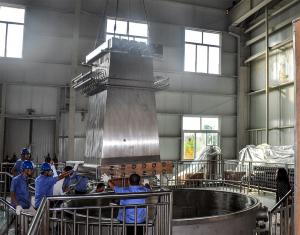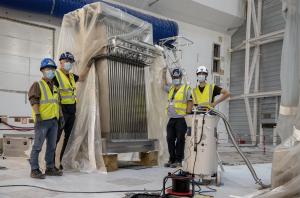More than just pedestals
In the ITER tokamak, components with the simplest of missions—like supporting a very heavy load—are pieces of highly sophisticated technology. Take the gravity supports situated under each toroidal field coil. In essence, they are just pedestals. But as they will be supporting 10,000 tonnes of superconducting magnets at cryogenic temperature—and as that mass will be exposed to intense electromagnetic forces in the course of operation (not to mention seismic loads if they occur)—the 18 gravity supports cannot just be massive and sturdy. They need to be much more than that.
Designers and engineers at the ITER Organization, at the Chinese Domestic Agency (responsible for the procurement), and at the Southwestern Institute of Physics, SWIP (tasked with manufacturing the 20-tonne components) faced a major challenge that required many years of prototyping, load analysis and qualification testing.
The first two gravity supports to reach ITER were successfully leak tested last week to ensure that shipping, handling and unpacking operations had not altered the leak-tightness that had been tested and qualified in a vacuum chamber in China before shipment.



